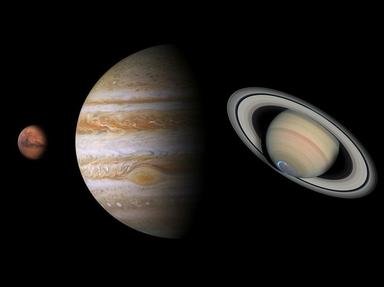
Celestial Order Trivia Quiz
Planets and Dwarf Planets
In 2008, two more dwarf planets were discovered in our solar system, bringing our major planetary bodies (not counting moons) up to 13. You probably know them very well in order from the Sun, but can you put them in order by size?
An ordering quiz
by reedy.
Estimated time: 3 mins.